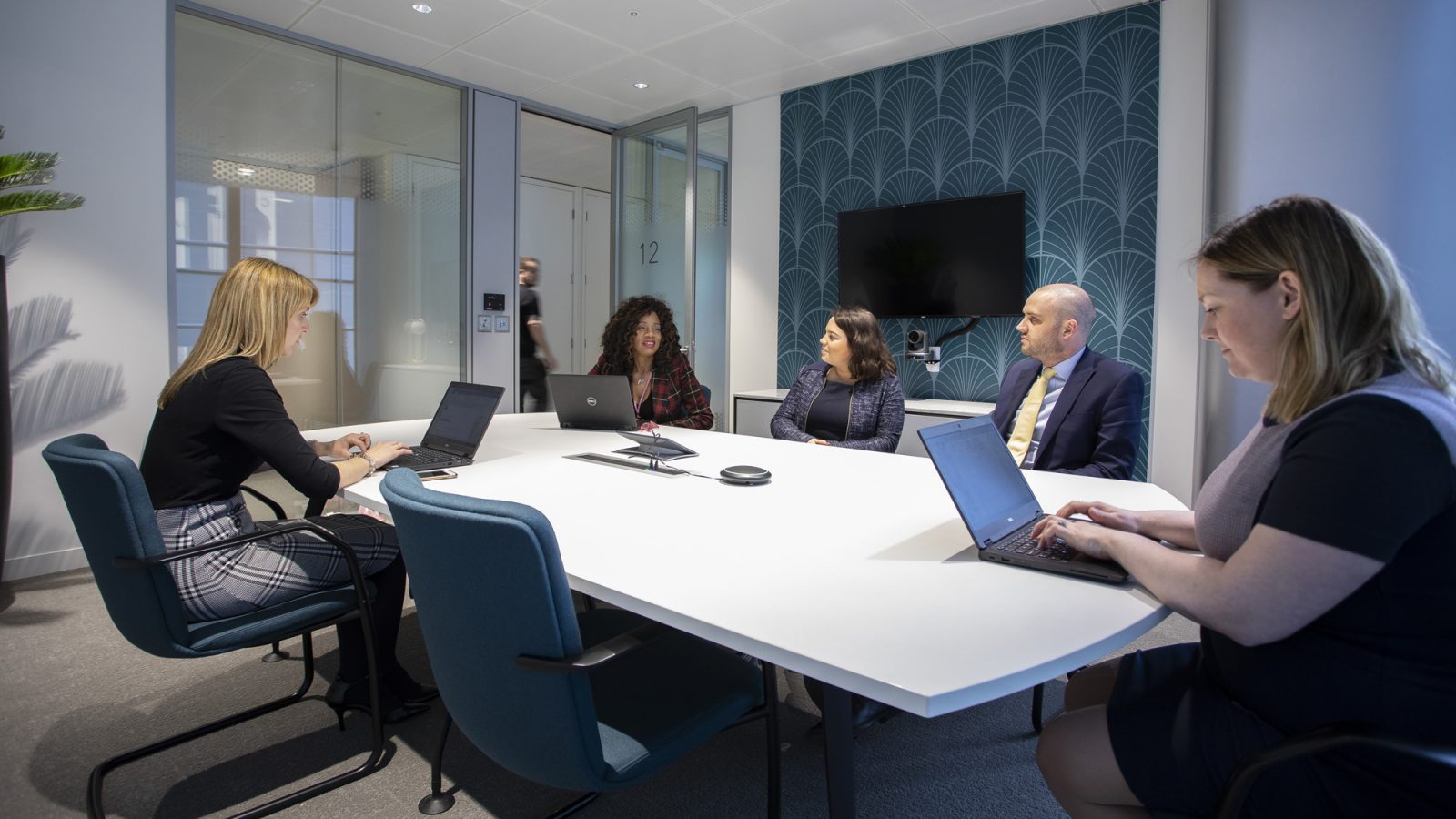
Surprisingly, for the last 40 years workplace digital technology has changed very little.
The principle architecture of most of the technologies we associate with today was already around in the 70’s. While new applications have been developed, processing speeds increased and cost and feature richness improved, email has remained the most prevalent form of business communication for decades. Until now.
New workplace technologies are now offering more immersive, collaborative and experiential capabilities. Machine learning, virtual assistants and new collaborative technologies are not only changing the relationship between people and place, they are changing the very nature of our work by elevating the effects of human endeavor further and enhancing our capacity.
Early adopters have been using these technologies to secure competitive advantage for some time and architects are already designing them into the fabric of our new buildings. Now it’s time for the majority to invest in the technological revolution, but where should organisations begin and what is most likely to make a project fail?
Projects largely fail because of a lack of strategy. A US firm of personal development coaches said:
“Without strategy, change is merely substitution not evolution.”
The starting point for a successful change management programme of any kind centres on the ‘why’, for this inevitably determines the ‘how’. As Darryl Beckford, Head of Digital Acceleration at KCOM said in his article for Computer Business Review:
“Enterprises must also appreciate why the opportunity for digital transformation has arisen, what caused the rapid initial interest and excitement – beyond technological innovation – and therefore how best to implement the principles into their own organisations. It’s not enough to know digital transformation is the solution; enterprises need to fully understand their organisation’s challenge too.”
These new technologies are adept at solving many of organisations’ productivity and profitability challenges – automation can help to free employees from mundane tasks so they can be upskilled and collaboration technologies can help to bring new products to market more quickly.
However, their successful deployment relies on a clear understanding of the operational challenge that needs to be tackled and the desired outcome. This sets the foundations for change and provides a goal against which progress and subsequently benchmarks can be measured.
While this may seem both simple and obvious, findings actually suggest that organisations do not show enough foresight or commitment when approaching digital change. IDC’s Digital Transformation report suggests that 70 per cent of digital transformation initiatives fail because of a lack of collaboration, integration, sourcing and project management and that 60% of digital transformation projects won’t achieve the scale they desire because of ‘a lack of strategic architecture’.
Perhaps the reason for this comes from outdated thinking. For a long time, IT was a back-office function concerned with fixing day-to-day problems and buying new hardware. Consequently a transactional approach to all things IT and digital has endured and some business leaders wrongly believe that transformation will occur simply by signing the purchase order. These organisations are failing to grasp the human aspects of change and perhaps most importantly that digital transformation is part of something far greater – organisational transformation.
Thankfully, technology professionals are now being granted a seat at the senior management table and have become instrumental agents of change for businesses with big plans. Organisations that recognise the real role and value of today’s IT professionals stand to do well with their digital change projects.
Digital transformation requires consideration of five core areas:
Successful digital change demands a clear strategy that is aligned with wider business strategy, unified leadership and sufficient resource to drive it through with consistency in the short, medium and long term.
Digital transformation requires consideration of five core areas:
1. Understand what you need digital change to do.
This does not demand a thorough knowledge of all the available workplace technologies, but rather a real understanding of how an organisation works, where its challenges are and where the opportunities lie. Technology can provide a road map to solving many of the obstacles to productivity, wellbeing and profitability.
2. Test out the new technologies and talk to peers.
Choose a strong technology partner that will show these technologies at work and talk to businesses who have recently undergone change. A staggering 33% of managers don’t think to involve employees when embarking on change even though they play an instrumental role in its success.
3. Recognise the project for what it is.
Digital transformation is essentially organisational transformation. It’s important to recognise the scale of the change and the time, effort and resource it will need to ensure it succeeds. Plan well in advance and appoint a change management team both internally, and if budget permits externally, to support the transition.
4. Ensure that onboarding is given the consideration it deserves.
70% of change plans fail because not enough emphasis is placed on how to turn new processes into everyday behaviours. Make sure training, support and guidance is plentiful to ensure that new practices become habit quickly.
5. Measure and track.
Set benchmarks, chart progress and don’t be afraid to revisit aspects of the digital transformation that haven’t worked as well as expected.
Seventy one per cent of UK organisations achieving digital transformation are already seeing improvements in customer experience and 34% are seeing increases in revenue as a result. The potential benefits of digital change are clear but business leaders must approach change of this magnitude with both caution and clarity. Those that take the time to identify their goals, understand their operational challenges and put the right resource, commitment and budget behind change, will come out best as transformative technologies continue to change how, when and where we work.
Related thinking
OFFICE INTERIOR
DESIGN & BUILD
From Workplace Consultancy through design, to the build and beyond. Whether you use all or part of our capabilities, you’ll find we’re a safe pair of hands.
Workplace Consultancy
Helping you achieve the optimal combination of people, space and technology, enabling your organisation to realise its maximum potential in a FutureFlexible way.
Design & Build
Claremont’s comprehensive in-house capability takes care of it all, it’s an end-to-end solution that mitigates risk, accelerates timescales and controls costs.
Workplace Furniture
We believe furniture has a huge impact on the people using it. We aren't limited to a specific range of suppliers, so finding exactly the right products for you or even designing you something unique is at the heart of our approach.
Workplace Technology
Just the right tech fully integrated with your space gives you that all-important agile and collaborative environment.
